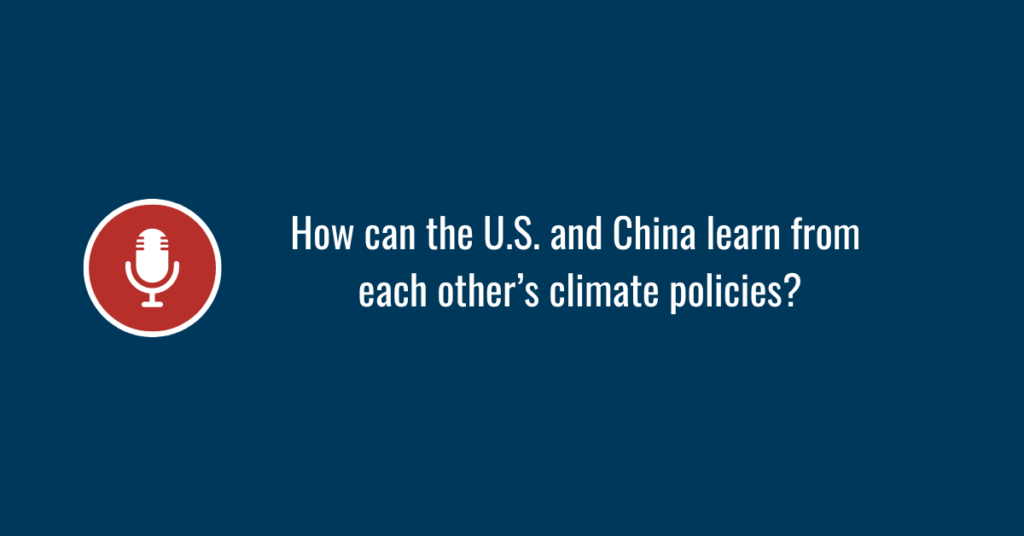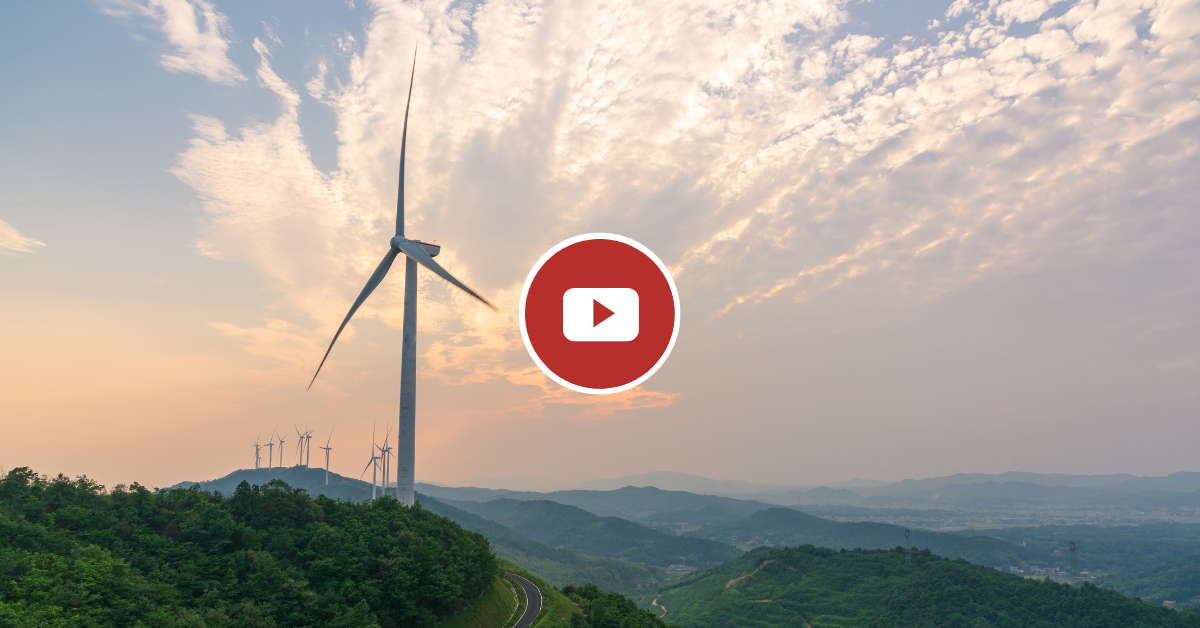Institute of Public and Environmental Affairs (IPE) is on a mission to clean up severe air and water pollution in China. Ma Jun, founding director of IPE, discusses the innovation of the Blue Map app and IPE’s efforts to speed up climate actions domestically and abroad.
In an interview conducted on April 10, 2023, IPE founder Ma Jun discusses the latest developments in IPE’s work.
Learn more about IPE and China’s climate mitigation here
View more U.S.-China Insights videos
Transcript
How is China supporting international efforts to fight climate change?
Ma Jun: Through China’s Clean Air Action plan, China managed to turn to bring the massive expansion of its coal consumption to a sudden halt. From 2000 to 2011, in just this decade of time, China’s coal consumption tripled, that and of course, [along] with a significant expansion of our carbon emission. But through the clean air efforts, that trend has been stopped and China’s coal consumption more or less stabilized, and I think that was a major contribution by itself.
But that was obviously not enough because we’re still consuming half of the world’s coal and our carbon emission is more than 10 billion tons, roughly about one-third of the global total. So we’re by far the largest current greenhouse gas emitter. China understands its responsibility and made a carbon peak and neutrality pledge in 2020 to try to peak our carbon emission by 2030 and then to try to completely neutralize this more than 10 billion tons of carbon dioxide by 2060.
And I think China’s efforts to do this have motivated more countries to follow. And so far, we’re very happy to see that more than 130 countries and regions have made commitments on carbon neutrality. And today, you know, I think we’re facing a real big challenge globally. You know, the challenge of climate change looms large and the gap of emissions reduction is actually widening instead of being closed. So I think we are willing and ready to work with other countries to solve the problem.
What can the U.S. and China learn from each other when it comes to protecting the environment?
Ma Jun: Yeah. The United States has been through the industrialized age and then urbanization much earlier than China. And during the 1960s and 70s it also suffered from water and air pollution, and through that process has created some of the real important mechanisms to address the pollution problem. So I myself and many of my colleagues back in China working on environmental protection have all benefited through all these years to learn from the some of the best practices developed in America, from the environmental legislation, Clean Air, Clean Water Act, to the market-based solutions like the carbon free market, and to the very issue of transparency. It was the toxic inventory developed in America that gave me inspiration to develop our transparency program in China. So we have learned so much from America and through all these years have benefited.
Of course, during this process, China have also managed to develop our own models, [such as] practical solutions having to do with environmental problem. Particularly as a developing country, we managed to take advantage of the enormous progress made in the development of IT technologies. In America, it was kind of the 70s and 80s, that era.
It’s a different era, but in China, [we] took advantage of the Internet and mobile internet and of course big data, and [we] tried to use that to help enhance the efficiency and the cost in our pollution and pollution control, and tried to use that to engage more stakeholders in our practice. And I think some of my U.S. colleagues were surprised to see the massive real-time disclosure of the automatic monitoring that can be done in China.
What is the most pressing climate issue facing China today?
Ma Jun: Just like in many other parts of the world, we can see that along with the rising of the concentration in the atmosphere of the greenhouse gases, our temperature is going up. And along with that, there will be the rise of the sea level and all of this long-term impact. But extreme weather already caused a lot of impacts in China. Last year, in 2022, we suffered a historical extreme heat wave and in quite a few parts along in the Yangzi River Valley, the temperature reached 45 Celsius degrees, and then in some regions higher than that.
And then during the monsoon season, we have seen a significant reduction of rainfall which caused trouble not just to the water supply, but also created a lot of difficulties in our local power grid, which depend so much on hydropower. And so, climate change is making its impact in China just like in many other parts of the world.
And we’re now working to try to peak and neutralize our carbon emission as a country which is still growing and trying to go through this industrialization and urbanization. That fundamentally is our challenge. But now, you know, the solution is to try to synergize our fighting against climate change with the local pollution control and to try to strike these two targets together.
This transcript has been lightly edited for clarity. Please refer to the video interview to ensure accuracy.

